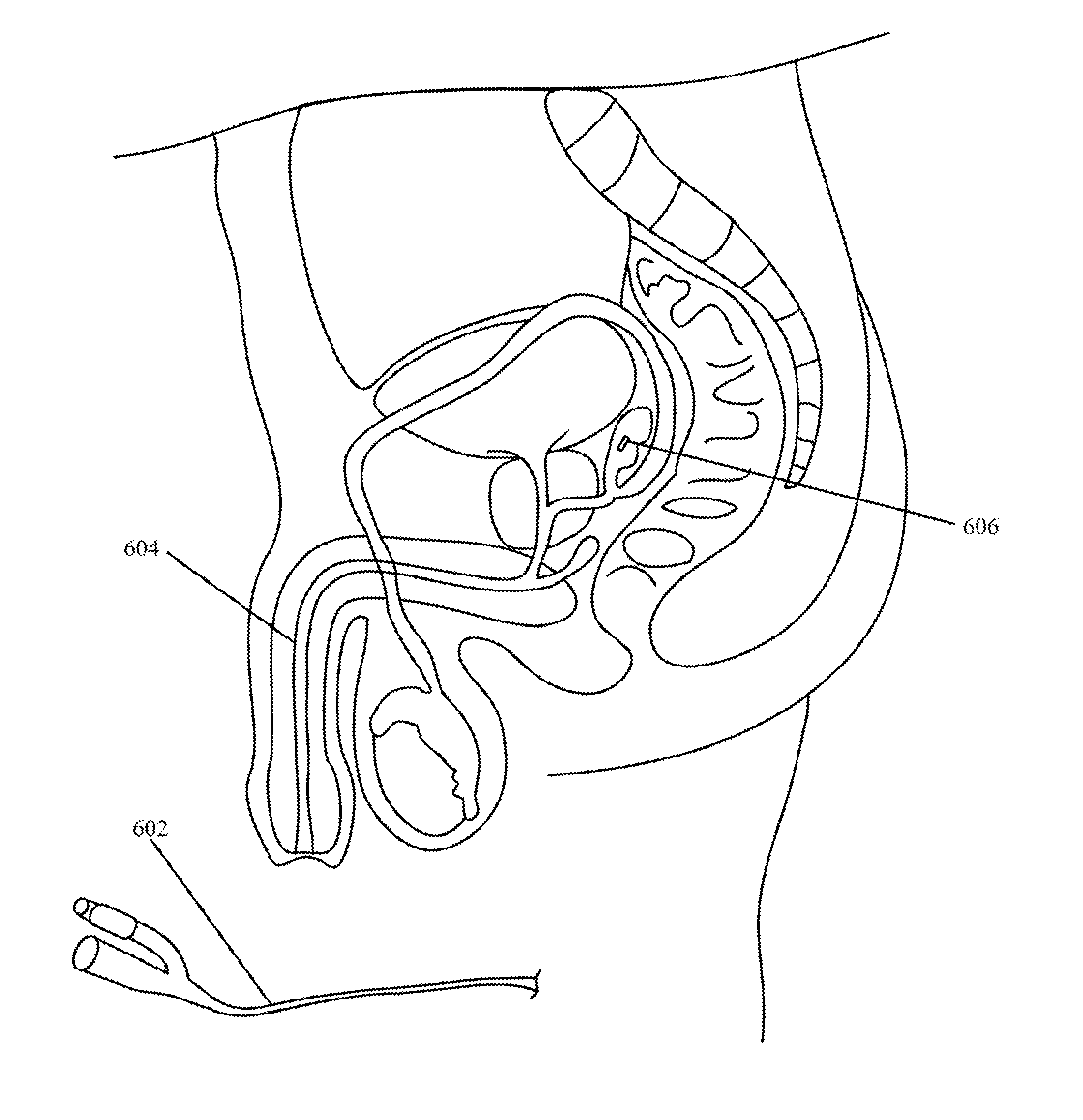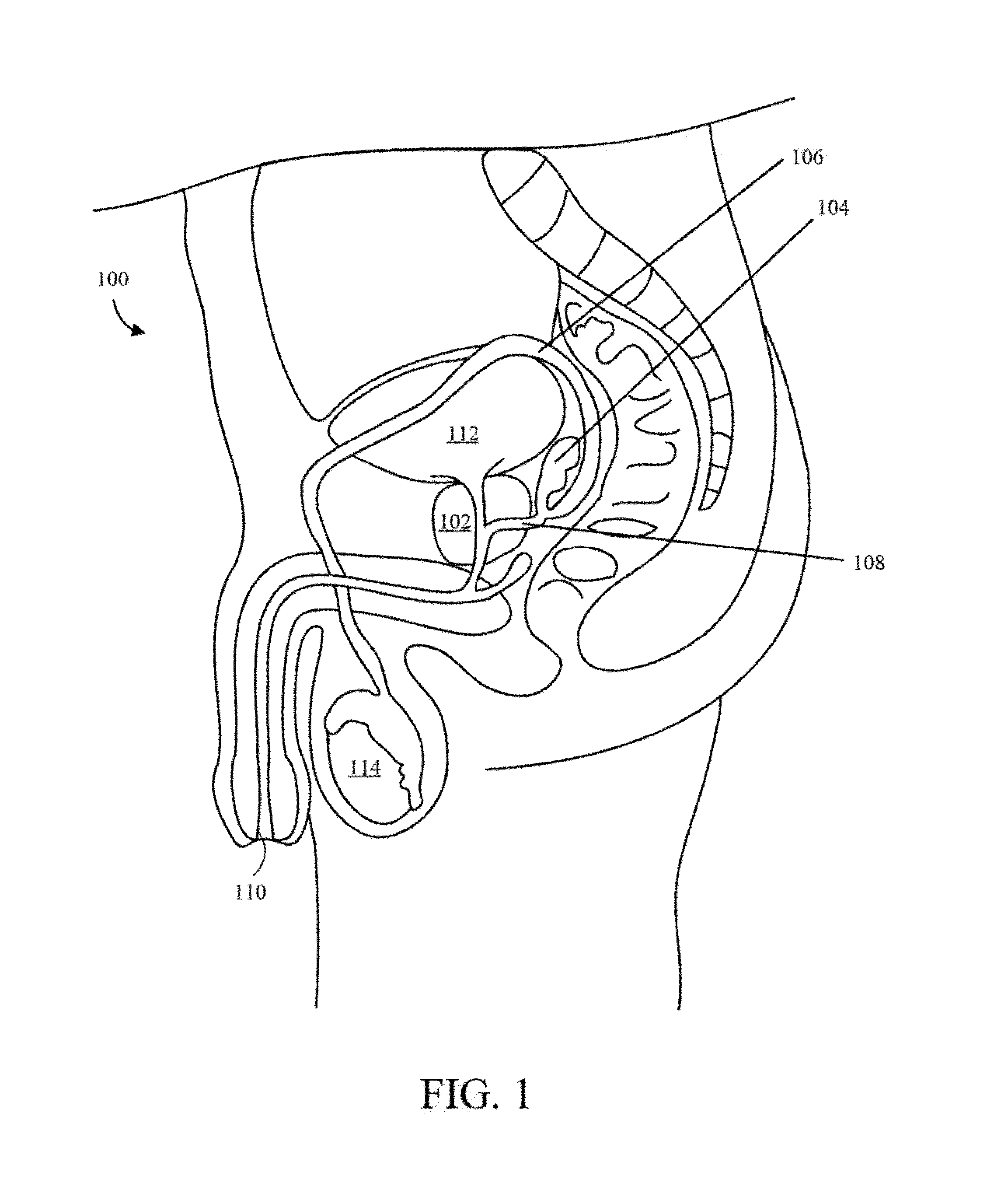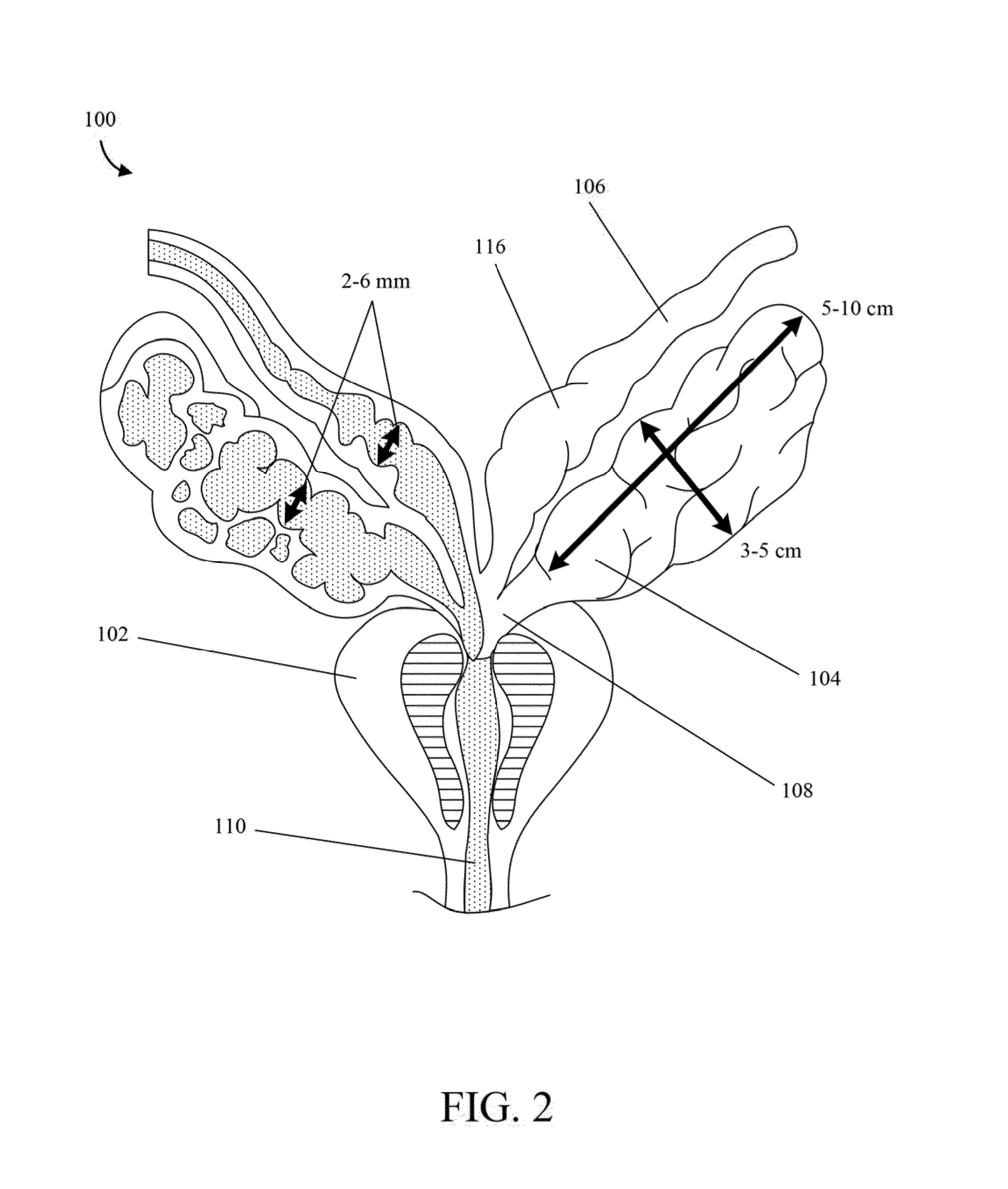Implantable drug delivery device and methods
a drug delivery and implantable technology, applied in the field of medical devices, can solve the problems of not being popular or widespread in the field of urology, reducing the quantity of drugs to reach the desired site, and relatively high failure rate of systemic antibiotic administration
- Summary
- Abstract
- Description
- Claims
- Application Information
AI Technical Summary
Benefits of technology
Problems solved by technology
Method used
Image
Examples
example 1
Making a Drug Delivery Device
[0098]A prototype PGS module for in vitro development was constructed and tested for drug release kinetics with ciprofloxacin, a fluoroquinolone commonly prescribed for chronic prostatitis and other UTIs. The prototype module 900 is shown in FIG. 9. The prototype module 900 was rectangular in shape with an internal cylindrical core for housing a 300 μm diameter drug rod 902 and contained a single 100 μm release orifice 904. Modules were formed through melting of PGS pre-polymer within a wire-strung aluminum mold followed by a polymerization reaction under heat and vacuum for 48 hours. The PGS casting remained within the mold as a laser microablation process drilled orifices at select locations on the top surface of the casting, which projected down to the embedded 300 μm diameter longitudinal wires.
[0099]Wires were pulled out of the mold through the sides and the PGS casting was removed from the mold and cut into rectangular modules measuring 10 mm×1.5 m...
example 2
In Vitro Release Kinetics of the Drug Delivery Device
[0101]For in vitro measurement of release kinetics, prototype PGS devices loaded with ciprofloxacin were made as described in Example 1, were mounted on the inside of a glass vial, and were immersed in 2 mL de-ionized water. Time point measurements of ciprofloxacin-HCl (CIP) concentration in the surrounding media were taken roughly every 12 hours over an 8-10 day period using a quantitative HPLC-UV detection method developed for CIP.
[0102]FIG. 10 illustrates the results of a representative CIP release experiment for two PGS modules having a 100 μm orifice and a control module without an orifice. The payload for each module is noted in μg. An induction time was observed before the onset of zero-order controlled release kinetics during which time water permeated into the devices and began to dissolve some of the drug payload. The two modules having 100 μm orifices were observed to release CIP at nearly the same rate after induction ...
example 3
Delivery of Lidocaine to the Vesicular Gland of Rabbit
[0113]A pilot in vivo experiment was conducted with a non-resorbable silicone device implanted in the vesicular gland of a rabbit (2.7 kg, New Zealand White, male). The drug used was lidocaine and total loading was 2 mg. This experiment was designed to simulate the situation when the device is implanted in a location other than the bladder, such as the seminal vesicle for men. The non-resorbable device for a rabbit experiment is shown in FIG. 13, and lidocaine plasma concentration over the time is shown in FIG. 14.
PUM
| Property | Measurement | Unit |
|---|---|---|
| diameter | aaaaa | aaaaa |
| outer diameter | aaaaa | aaaaa |
| outer diameter | aaaaa | aaaaa |
Abstract
Description
Claims
Application Information
 Login to View More
Login to View More - R&D
- Intellectual Property
- Life Sciences
- Materials
- Tech Scout
- Unparalleled Data Quality
- Higher Quality Content
- 60% Fewer Hallucinations
Browse by: Latest US Patents, China's latest patents, Technical Efficacy Thesaurus, Application Domain, Technology Topic, Popular Technical Reports.
© 2025 PatSnap. All rights reserved.Legal|Privacy policy|Modern Slavery Act Transparency Statement|Sitemap|About US| Contact US: help@patsnap.com



